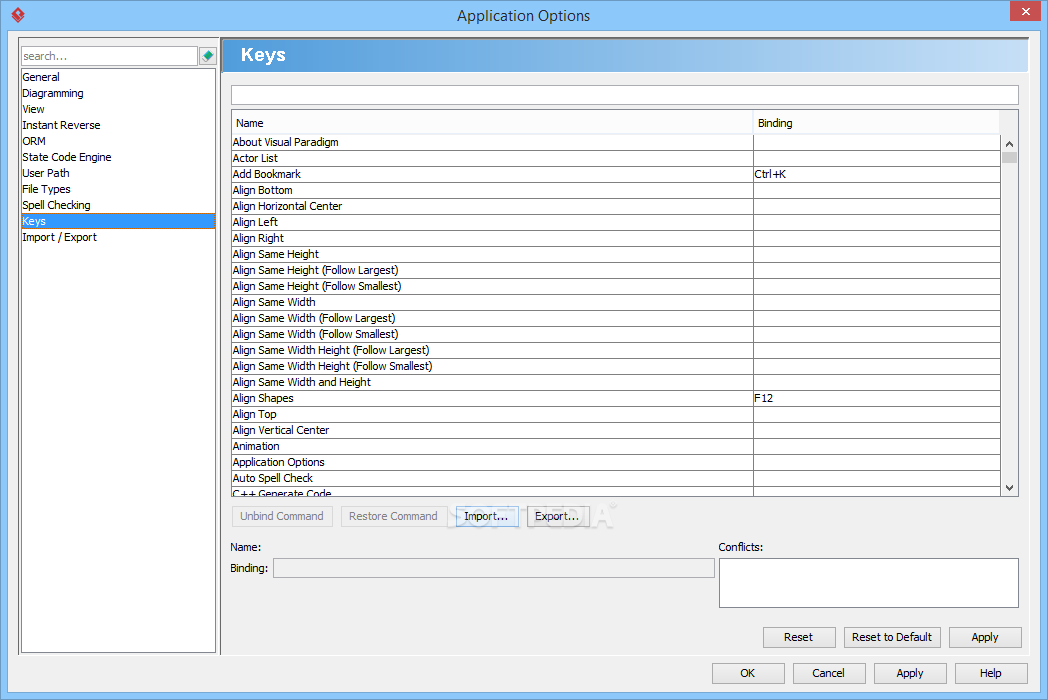
- #VISUAL PARADIGM SUITE 3.1 FOR FREE#
- #VISUAL PARADIGM SUITE 3.1 HOW TO#
- #VISUAL PARADIGM SUITE 3.1 GENERATOR#
- #VISUAL PARADIGM SUITE 3.1 SOFTWARE#
- #VISUAL PARADIGM SUITE 3.1 CODE#
Choose Surface Area Configuration for Services and Connections. Environment Settings of SQL Server 2005 Click Start > All Programs > Microsoft SQL Server 2005 > Configuration Tools > SQL Server Surface Area Configuration, as shown below: A dialog box will popup. We won t go into much detail on definitions of JDBC as you re expected to have covered this (To download jtds jdbc driver, refer to Appendix A).

#VISUAL PARADIGM SUITE 3.1 FOR FREE#
Using SQL Server 2005, one driver available for free is Jtds JDBC driver. Furthermore, we need a JDBC driver to enable our Java application to interact with the SQL database. SQL Server must enable both Window Authentication / SQL Authentication to access its server. Identify the port number the SQL Server is listening to. Account student with username student and password mypassword must be available / exist for SQL Server Account student must be granted access and control to database CustomerOrder. Before running DBJtds, a few settings on the SQL side are required: Database CustomerOrder must have already been created in SQL Server Table Customer must be created under Database CustomerOrder.
#VISUAL PARADIGM SUITE 3.1 HOW TO#
The codes will demonstrate how to connect JAVA to SQL Server 2005 and do SQL operations.
#VISUAL PARADIGM SUITE 3.1 CODE#
A Java project has been provided for this lab called DBJtds (source codes), which is the code implementation of the class diagram Customer Order earlier. In this lab however, we will cover on SQL Server 2005 with the Eclipse IDE. Don t forget to specify your output path: Nor Samsiah Binti Sani 4ĥ JAVA CONNECTIVITY WITH SQL DATABASE USING JDBC There are lots of SQL servers available for connection with JAVA such as MySQL, PostgreSQL or SQLite.
#VISUAL PARADIGM SUITE 3.1 GENERATOR#
Refer below diagram: Nor Samsiah Binti Sani 3Ĥ Make sure all your settings in the Instant Generator window follows the diagram below. Class Diagram for Customer Order Under Tools > Instant Generator > Choose Java. Follow the steps provided to generate java codes from it. Now, consider a Class Diagram for Customer Order System below. At the same time, VP UML also provides database generation from UML models (for Professional edition and above only), so to develop our database, we will build them manually. From these skeleton codes, we will use them to make a JAVA project in our preferred IDE, in this case the Eclipse IDE. Nor Samsiah Binti Sani 2ģ What we can use instead is the Instant Code Generation feature in VP UML, which automatically generates skeleton java codes (Feature available only from Standard Edition onwards, not applicable to Community Edition). Unfortunately, such feature is only available in the Professional Edition and above (UKM labs are installed with Standard licenses VP UML). Model Representation of Code from Class Diagram Type Model Code Class public class M圜lass CODE GENERATION FROM UML DIAGRAMS Other than allowing code generation from UML models, VP UML provides a feature to automatically create a JAVA project in Eclipse / Netbeans IDE from UML diagrams. For this lab, we will cover on how to implement codes from Class Diagram. All the other diagrams (use case, sequence, collaboration) are interesting for gathering requirements, but are useless in modeling a solution that can be automatically transformed into a running application, and thus we will ignore them here. The class diagram (for modeling the structural aspects of the object model) provides a framework that supports the design of complex applications in a way that is fully complete (and thus allowing 100% code generation) while still implementation independent (which means that the programmer will write the rest of the implementation codes).

These two diagrams (more one than the other, depending on the nature of the subsystem being modeled). UML has two diagrams that are used for behavior specification: the activity diagram and the state diagram.
#VISUAL PARADIGM SUITE 3.1 SOFTWARE#
INTRODUCTION Development and deployment (both programming codes and database) presents the next step in Software development life cycle, especially after Requirement Modeling and Analysis has been carried out. Exposure to JDBC integration and interaction of SQL database with Java programs. 1 LAB 6: Code Generation with Visual Paradigm for UML and JDBC Integration OBJECTIVES To understand the steps involved in Generating codes from UML Diagrams in Visual Paradigm for UML.


 0 kommentar(er)
0 kommentar(er)
